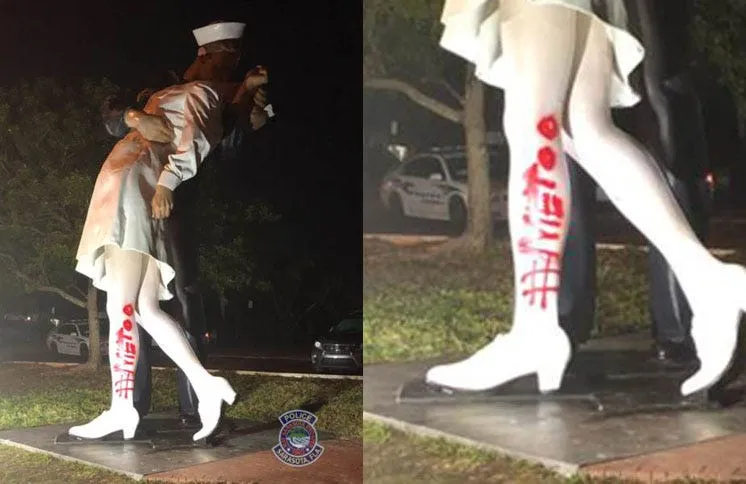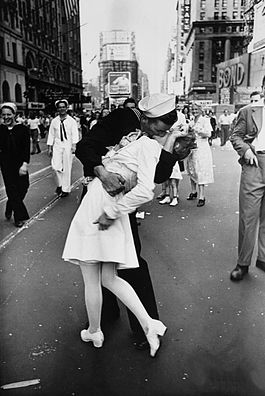As one of the most eye-catching sites in Sarasota, the “Unconditional Surrender” statue is well-known and controversial. When the city announced on September 20 that it would be relocated to construct a roundabout at the bustling downtown intersection where stands, many Sarasotans were unhappy, while others were pleased since the statue has been associated with sexual assault and the #MeToo movement.
Professor of Sociology and Gender Studies Emily Fairchild took interest in the local conversations about the statue and is attempting to involve the New College community with a tutorial devoted to learning the history of the statue and how it correlates to the #MeToo movement.
“When I saw that there was a possibility of permanent change because of the construction, I thought, ‘We need to be part of this,’” Professor Fairchild said. “New College has an excellent gender studies program with expertise to offer the public in thinking about what the statue represents and why it’s problematic.”

The statue got a lot of local and national attention when it was vandalized on Feb. 19, 2019 around 1 a.m. with “#MeToo” spray painted in red on the woman’s leg. The #MeToo movement provided a platform for survivors of sexual assault to tell their stories and recieve support.
“I think there is a pretty clear connection [between the statue and the #MeToo movement],” Professor Fairchild said. “The woman in the original photograph did not consent to the kiss. She can say ‘me too.’”

The 2019 vandalism was thought to be a response to the controversy surrounding the statue and the story of the original 1945 Alfred Eisenstaedt photograph taken in Times Square. In the photo, a Navy soldier is kissing a total stranger immediately after the announcement of the U.S. victory over Japan, effectively marking the end of World War II.
“We also ought to think about how the moment captured in that photo has been romanticized: people frequently invoke romance when visiting the statue,” Professor Fairchild said. “Images of unwanted sexual contact are pervasive in US culture and we come to accept them as normal reflections of gender relations, even ones that deserve to be celebrated. This is why we need the #MeToo movement.”
Sarasota Magazine published an article on Sept. 24 that explored the two sides of the argument.
Financial advisor David Kotok spoke in favor of keeping the statue, as he works downtown and often takes walks along the marina.
“My frequent walks along the marina allow me to eavesdrop on visitors to the sculpture,” Kotok said. “Parents and grandparents explain to children and grandchildren what the sailor’s uniform means.”
For Kotok, it seems to be an issue of Sarasota culture and pure, unadulterated Americana—Americana from a time of military pride and American reverie. If this is an issue of Americana, that then begs the question: is this statue really a representation of sexual assault? And if so, is Sarasota as a community willing to be represented by it?
“If we keep it as ‘Sarasota culture,’ we’re saying that we, as a city, are ok having a monument to sexual assault be a symbol of our community,” Professor Fairchild said. “We would also be saying that we are comfortable ignoring the fact that the interaction was not consensual. We’d be positioning ourselves on the side that romances assault rather than the side that acknowledges we need cultural change.”
As of right now, Unconditional Surrender is to be relocated to a different part of town. When and where is not yet known, however, the city is trying to include residents in the decision.
Information for this article was gathered from sarasotamagazine.com, radio.com, wikipedia.org and mysuncoast.com.
